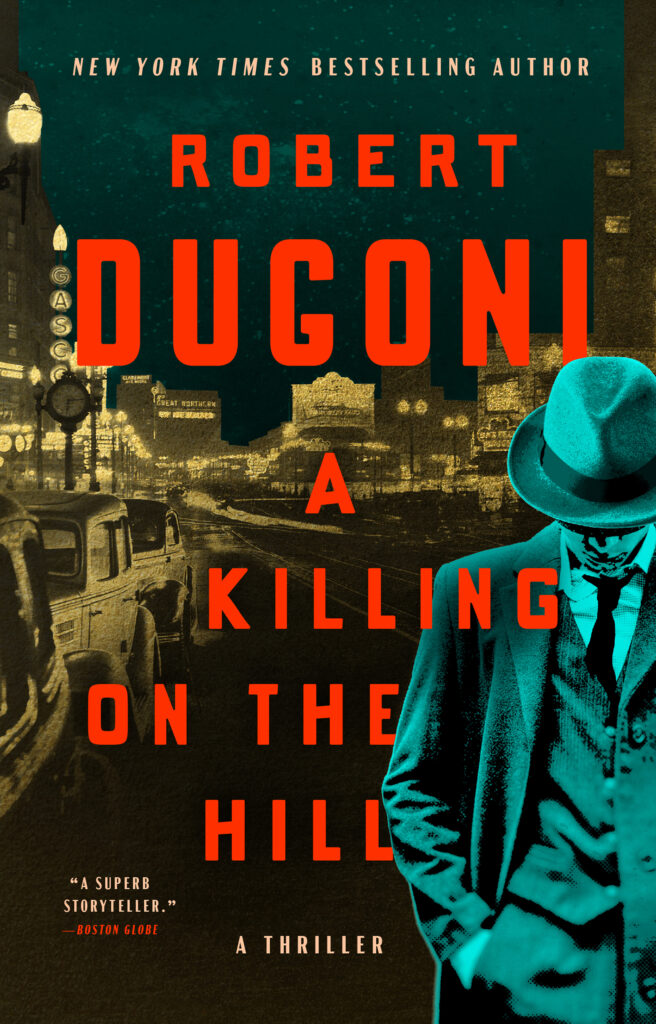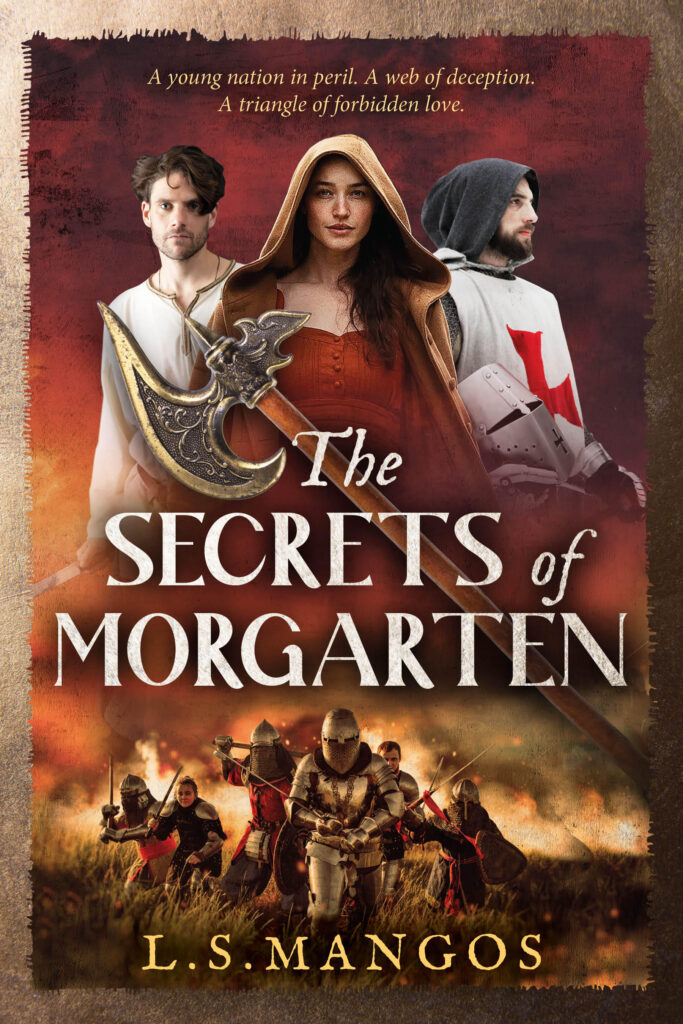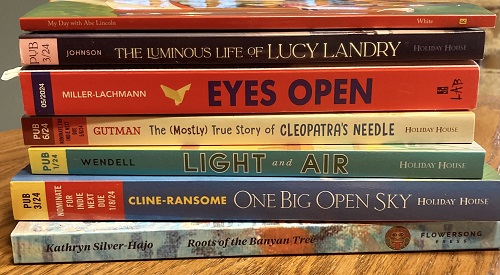History & Film | Not Whether to Be, But Who: Rewriting Ophelia
WRITTEN BY MISTY URBAN

Daisy Ridley as “Ophelia” in Claire McCarthy’s Ophelia. Courtesy of IFC Films. An IFC Films release.
In Ms. Scheide’s Honors English study of Hamlet, my group was assigned to present Act V. I was Hamlet, and Shannon was Laertes. We wrapped a stick of cardboard in aluminum foil to serve as the poisoned sword and carefully choreographed a fight scene which, in the performance, we flubbed, but nonetheless we died with suitable dramatic flourish, leaving Charlie, as Horatio, to mop up.
None of us can recall who played Ophelia. It’s possible we left her off-stage entirely, the ninny who tossed herself in a river because her boyfriend broke up with her. I recall sobbing cathartically on the blue carpet in my college dorm room as Mel Gibson’s Hamlet twitched his last, but Helena Bonham Carter’s Ophelia failed to elicit any sympathy. Kate Winslet in Kenneth Branagh’s Hamlet fared even worse; I couldn’t finish the movie, having moved on in my college studies from existentialism to irony.
When I taught Shakespeare at Lewis-Clark State College, my students didn’t know what do with Ophelia, either. We simply weren’t drawn to Ophelia’s inner drama the way we were to Hamlet’s. Maybe she was hiding a pregnancy, but where to go with that? We read Ophelia as a casualty of her own compliance, a victim of the patriarchy, an inert body strategized, scrutinized, and fought over by the men in her life — a cipher, not a character. Her one act of agency was to obliterate herself, but the poetry, and poignancy, of her gesture fell flat.
Tina Packer suggests in Women of Will (Vintage, 2016) that Ophelia is one of a cluster of Shakespearean heroines who die for speaking truth to power, but that elevates her tragedy, not her relatability. Once I learned that Elizabeth Siddal, the model for John Everett Millais’s gorgeous pre-Raphaelite Ophelia, nearly died of pneumonia from a bathtub of cold water to give the artist that look of ecstatic surrender, I felt I’d found the key to why Ophelia didn’t resonate with my feminist students. They weren’t about to die for their art, or a man, or the patriarchy.
In a feature on history and film, I’ll acknowledge here that Hamlet is historical fiction; “Amleth” in Saxo Grammaticus’ Danish History was already a legend in Shakespeare’s time. But Hamlet, considered by many to be Shakespeare’s most sophisticated and complex play, is an established artifact of world literature, firmly embedded in even our daily lexicon. Beyond their self-evident beauties, Shakespeare’s works have survived in teaching, reading, and performance because the plays respond so readily to our current cultural concerns. Harold Bloom, that bardolator, claims in Hamlet: Poem Unlimited (Penguin, 2004) that the play resonates so deeply because of its exploration of human experience, though he forgets to footnote that what he means is white European-born male experience. Mary Pipher’s landmark 1994 study Reviving Ophelia made Shakespeare’s heroine a template for how Western culture robs adolescent girls of their self-respect, self-assurance, ambitions, and joy. The name has become a shorthand for brief, doomed struggle, much like poor Ophelia’s life.
Ophelia is due for a feminist retelling, but the challenge of how to fit this character into a narrative palatable to contemporary audiences — that is to say, relatable to my Shakespeare class — is no small one. Lisa Klein’s novel Ophelia (Bloomsbury, 2008) makes a very readable effort, telling the coming-of-age story of a young woman with self-possession, agency, and pure good sense. Ophelia navigates her way through a competitive court, falls in love with the popular boy, and then must extricate herself from his bloody mission when he dedicates himself not to Ophelia, but to revenge against his usurping uncle and punishing his sexual mother.
Klein’s Ophelia participates fully in the dramatic action. She’s in league with Hamlet in his charade of madness. She finds the vial of poison proving that King Hamlet was murdered. And when (spoilers ensue) she suspects that Claudius set her father up to die by Hamlet’s hand and plans to end her life, too, she uses her knowledge of herbs, in the manner of other notable Shakespearean heroines, to fake her own death. Once free, she flees to France, finds refuge in a nunnery, and pursues a life of peaceful industry. Not only does Ophelia escape the madness and devastation of Elsinore, but she goes on to raise her child in peace and safety — yes, there’s another little Hamlet by the end. The losses of revenge are salved by a happy ending, much like Nahum Tate’s version of King Lear in which Cordelia marries Edgar.
Claire McCarthy’s cinematic re-imagining of Ophelia (2018) furthers Klein’s take on female agency in the court of Elsinore, but this version — much like the discussions in my Shakespeare seminars — turns Hamlet from a crisis of internal resolve and kingly succession to a knock-it-down-and-drag-the-body attack on the patriarchy. I found it utterly delightful and a bit confusing, and in the end it made me consider my chief objection to these feminist retellings of classic literature, much as I love them.
The film’s chief charm, it must be said, is its gorgeous visuals. The cinematography is my favorite kind: colors lush enough to eat, fabulous costumes, and elaborate sets. (I want Queen Gertrude’s bath for my house.) Crowd scenes are staged like a medieval tapestry, a profusion of texture and colors, and there’s a soft, hazy filter over every scene, even the final carnage. All this, and the chief actors are some of the prettiest working in film. The opening frame establishes this aesthetic by duplicating the famous Millais painting: Daisy Ridley, as Ophelia, floats faceup in a murky pool, trailing watery flora. An opening voiceover affirms the intention to recraft Hamlet’s legacy: having seen more than is in heaven or hell, Ophelia declares, now she is going to tell her story.
Interwoven with Ophelia’s assertion of control over her narrative (and her showing that she’s a strong swimmer, unlikely to drown) is an eerie, haunting chant of the love song that, in the play, Hamlet pens to her: Doubt that the stars are fire / Doubt that the sun doth move / Doubt truth to be a liar / But never doubt I love. The song proves a musical cue for the moments of passionate love and dramatic intensity, but its use here floats free of the play’s very interesting suggestion that the recipient must set aside the truth of her eyes and empirical evidence in order to believe in something of which she will see no real proof.
These echoes of Shakespeare’s greatest lines prove, in the end, mere hints and gesture. “You’re a fishmonger,” this Hamlet says to Polonius as a private joke to Ophelia, who compared him to a fisherman and herself a helpless fish in an early scene when he and Horatio discover her swimming. “The lady doth protest too much,” Gertrude herself says when she guesses that Ophelia has been hiding her relationship with Hamlet. And when Hamlet orders Ophelia “Get thee to a nunnery,” he is telling his secret wife, literally, to run away to a convent in France where she will be safe.
“To be or not to be,” arguably the most famous soliloquy in the English language, doesn’t even appear as a gesture. The movie sums up Hamlet’s internal struggle with an observation from Ophelia (made in that scene when she’s trying to persuade him to turn his back while she exits the water): “There are two sides struggling in you, one baser, one better.” Shakespeare’s language and themes are not to the film’s point.
Instead, the subject of female agency is the point, and to support this, the screenplay integrates the developing love affair between Queen Gertrude, a woman feeling the growing distance of her husband and son, and her covetous brother-in-law, Claudius. Though shocked at King Hamlet’s sudden death, Gertrude gives Claudius her hand quite willingly, a ploy to preserve her status and his attentions. The dark foil to Gertrude is her twin sister Mechtild, a role in Klein’s novel enlarged in the movie. Mechtild is an herbalist, a dealer of remedies as well as poisons, Claudius’s scorned lover, and third in the trio of women who decide the fate of Elsinore.
Claudius, like Hamlet, is stripped of interiority or any complex motive — a bit ironic for the play cited by some as the starting point for Western literary subjectivity. The women, too, though more active, are yet somehow less complex. Gertrude behaves like the adolescent girl, jealous of Ophelia; Ophelia behaves with sensible caution, only consenting to sex after Hamlet marries her (unlike the novel). When she finds the vial of poison in Claudius’s cloak, Ophelia communicates subtly to Hamlet, while they are being watched, what she’s discovered. She stops Hamlet from killing his uncle on the spot when The Murder of Gonzago reveals his guilt: it’s treason, and she doesn’t want revenge to cost him his life.
When she guesses that Claudius meant for Hamlet to kill her father and that he will try to kill her, too, Ophelia stages madness to call him out before the court, the only character who is brave enough to speak truly. She tells Horatio to dig up her grave, a key factor in her plan for escape. And she provides impetus for the final mayhem: when she reveals to Mechtild how Claudius betrayed her, a furious Mechtild leads the King of Norway’s soldiers into the hall, swords drawn (there’s even a horse for effect).
The grudges of men get very little stage time in this version; Laertes and Hamlet dispatch each other about as quickly as Shannon and I did in the high school auditorium. Mechtild and Gertrude bring down the curtain on the carnage, sharing one last meaningful look as Gertrude, after running her faithless husband through with the poisoned sword, knowingly drinks poison, while that haunting refrain sings out: Never doubt I love.
The bloodshed is orchestrated by the women; the storytelling, the plot, and the revenge belong to the women. Only Ophelia, rather than giving her life to it, gets clean away. There’s a moment when Ophelia flirts with suicide, when she thinks Rosencrantz and Guildenstern succeeded with their orders to kill Hamlet. But the movie makes her final break with Elsinore even more decisive. In another classic Shakespearean move, Ophelia, disguised as the courtier Osric, tries to persuade Hamlet to run away with her. When he won’t give up his revenge — and, possibly, his chance at the crown — she leaves. Ophelia has absorbed her father’s parting advice to Laertes: to thine own self be true. Sealing this is a final frame showing a joyful young girl running across an open field, an echo of the girlish Ophelia who opened the movie. This Ophelia’s legacy from the rottenness of Denmark is a daughter — no young Hamlet who might one day vie for the throne.
The movie lingered in my mind, but the gorgeous visuals couldn’t make up for what was missing: the subtle, leaping brilliance of Shakespeare’s language and the complexities of human thought and emotion that it expresses. The film, like the novel, has a tidy moral: ill motives lead to ill ends. But I wonder why a woman-centric retelling of this play wouldn’t borrow from its classic themes: loyalty, greed, revenge, and the nature of reality, existence, love, and truth. The women’s activities, as ever, are reduced to the pursuit of or reaction to their chosen sexual partner. Admittedly, neither do the men in Ophelia debate philosophical truths, among each other or themselves. Perhaps these are no longer topics that appeal to a broad audience. But I long for the day when our popular culture — our present moment’s literary artifacts — extend the full range of human thought and expression, and the deepest struggles of existence, to all sorts of ancestries and genders.
Then again, perhaps some viewers will find Ophelia a more welcome tale for its method, lacking in madness. “I did not lose my way. I did not lose myself to vengeance. Instead, I found my way to hope,” Ophelia claims at the end. If this makes for a rather less shocking story, it does offer a more satisfactory, self-assertive resolution for young women. Ophelia may lack the acrobatic language, passionate doom, and tragic reprisals that make the original play so fun to study and teach, but this clever, resourceful, and well-adjusted character is the kind of heroine my 12th-grade class might have rewarded with actual stage time.
ABOUT THE CONTRIBUTOR: Misty Urban is the author of two collections of short fiction and assorted scholarship on the theme of monstrous women and medieval romance. She is the Indie Reviews Editor for the HNR and also reviews for Publisher’s Weekly, Medieval Feminist Forum, and femmeliterate.net.
Published in Historical Novels Review | Issue 95 (February 2021)






